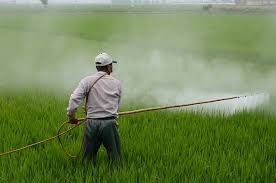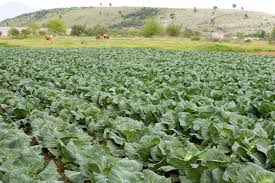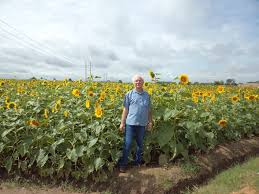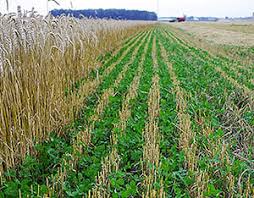Integrated cropping systems represent a holistic approach to agricultural production that combines various management practices to optimize crop yield while minimizing environmental impact.
This method is essential in today’s agriculture, as it seeks to address the challenges posed by pests, diseases, and changing environmental conditions. By integrating multiple cropping strategies, farmers can enhance biodiversity, improve soil health, and promote ecological balance.
The focus of integrated cropping systems for pest management lies in reducing reliance on chemical pesticides while implementing sustainable practices that benefit both the ecosystem and agricultural productivity.
One of the key components of integrated cropping systems is crop rotation. This practice involves alternating the types of crops grown in a particular area across seasons or years.
Crop rotation disrupts pest life cycles, making it more difficult for them to establish and thrive. For example, planting legumes in rotation with cereal crops can enhance soil fertility and provide natural pest control by attracting beneficial insects.
Additionally, intercropping growing two or more crops in close proximity can create a more complex habitat that encourages predatory species, thereby reducing pest populations.
Incorporating cover crops is another strategy within integrated cropping systems that aids in pest management. Cover crops, such as clover or vetch, are planted during the off-season to improve soil health and reduce erosion.
They can also serve as a habitat for beneficial insects, such as pollinators and predatory pests that naturally control harmful pest species. Furthermore, cover crops can compete with weeds, reducing the need for herbicides and promoting a healthier ecosystem.
Integrated pest management (IPM) techniques play a vital role in integrated cropping systems. IPM emphasizes the use of biological, cultural, physical, and chemical tools in a synergistic manner to manage pests effectively.
By monitoring pest populations and identifying thresholds for action, farmers can make informed decisions about when and how to intervene.
This could involve introducing natural predators, utilizing pheromone traps, or applying targeted pesticide applications when necessary. The goal is to minimize chemical use while maintaining effective pest control, ultimately leading to a more sustainable agricultural system.
Soil health is a critical factor in the success of integrated cropping systems. Healthy soils foster a diverse array of microorganisms that contribute to pest suppression and nutrient cycling.
Practices such as reduced tillage, organic amendments, and mulching enhance soil structure and promote microbial diversity. As a result, healthy soils can improve crop resilience, making plants less susceptible to pest infestations and diseases.
Moreover, the socio-economic aspects of integrated cropping systems cannot be overlooked. By adopting sustainable practices, farmers can reduce their input costs, increase market opportunities, and enhance food security.
As consumers increasingly demand environmentally friendly products, farmers utilizing integrated cropping systems may find themselves better positioned to meet these expectations.
Integrated cropping systems for pest management provide a comprehensive and sustainable approach to agriculture. By incorporating diverse practices such as crop rotation, intercropping, and IPM strategies, farmers can effectively manage pests while promoting environmental health.
This method not only leads to increased crop yields and improved soil quality but also contributes to the resilience of agricultural systems in the face of changing environmental conditions.
As global challenges continue to grow, the adoption of integrated cropping systems will play a crucial role in sustainable agricultural practices for the future.
Understanding Pest Management in Agriculture

1. Definition of Pest Management: Pest management involves the control of pests that threaten crops, livestock, and the overall agricultural ecosystem. It aims to minimize damage while ensuring economic viability and environmental sustainability.
2. Types of Pests: Common agricultural pests include insects, weeds, fungi, and diseases. Understanding their biology and behavior is essential for effective management strategies.
3. Economic Impact: Pests can cause significant economic losses in agriculture through reduced crop yields, increased production costs, and loss of quality. Effective pest management is crucial for maintaining productivity and profitability.
4. Environmental Considerations: Effective pest management must balance pest control with the protection of beneficial organisms and the overall ecosystem. Overreliance on chemical pesticides can lead to environmental degradation and resistance issues.
Principles of Integrated Pest Management (IPM)
1. Holistic Approach: IPM takes a comprehensive view of pest management, combining multiple strategies to control pests, including biological, cultural, mechanical, and chemical methods.
2. Monitoring and Identification: Regular monitoring of pest populations and accurate identification of pests help inform management decisions. Understanding the life cycles and behaviors of pests aids in timing interventions effectively.
3. Prevention Strategies: Implementing preventive measures, such as crop rotation, resistant plant varieties, and proper sanitation practices, reduces the likelihood of pest outbreaks.
4. Threshold Levels: IPM emphasizes establishing economic threshold levels, which determine when pest populations reach a point that action is necessary to prevent economic damage.
5. Use of Multiple Control Methods: Combining various control methods (e.g., biological controls, insect traps, and targeted pesticide applications) increases the effectiveness of pest management while minimizing risks to humans and the environment.
Benefits of Integrated Cropping Systems for Pest Control
1. Enhanced Biodiversity: Integrated cropping systems promote biodiversity, which can enhance the presence of natural predators and parasites that help control pest populations.
2. Reduced Pest Pressure: Diverse cropping systems can disrupt pest life cycles and reduce pest populations, minimizing the need for chemical interventions.
3. Improved Soil Health: Healthy soils contribute to robust plant growth, making crops less susceptible to pest damage. Integrated cropping practices improve soil structure, nutrient availability, and microbial activity.
4. Sustainable Practices: Integrated cropping systems support sustainable agricultural practices by reducing dependency on chemical pesticides and promoting ecological balance.
5. Economic Benefits: By lowering pest populations and enhancing crop resilience, integrated cropping systems can lead to increased yields, reduced input costs, and improved farm profitability.
Read Also: 7 Medicinal Health Benefits of Daffodils (Narcissus Plant)
Key Components of Integrated Cropping Systems

1. Diversity in Cropping: Integrated cropping systems promote planting a variety of crops, which enhances biodiversity and ecological resilience, improving soil health and reducing pest pressures.
2. Crop Rotation: Alternating crops in specific sequences helps break pest and disease cycles, manage nutrient levels, and improve soil fertility over time, leading to sustainable production.
3. Soil Management Practices: Implementing practices such as cover cropping, reduced tillage, and organic amendments enhances soil structure, fertility, and moisture retention, supporting healthy crop growth.
4. Efficient Resource Use: Integrated systems focus on optimizing water, nutrients, and energy use through precision agriculture techniques and conservation practices, reducing waste and enhancing productivity.
5. Economic Viability: By diversifying crops and utilizing sustainable practices, integrated cropping systems can improve farm profitability while reducing financial risks associated with market fluctuations.
Crop Rotation as a Pest Management Strategy
1. Disruption of Pest Life Cycles: Rotating crops disrupts the life cycles of pests and diseases, reducing their populations by preventing them from establishing in the same crop year after year.
2. Nutrient Balance: Different crops have varying nutrient needs; rotating them helps maintain soil nutrient levels, which can deter pests that thrive in nutrient-depleted soils.
3. Timing and Planting Strategies: Effective crop rotation involves planning the timing of planting and harvesting to avoid peak pest populations, minimizing the likelihood of pest infestations.
4. Soil Health Improvement: Diverse root structures from different crops improve soil health and structure, enhancing resilience against pests and diseases.
5. Enhanced Biodiversity: By promoting a variety of crops, rotation encourages beneficial insects and natural enemies of pests, helping to maintain ecological balance.
Companion Planting Techniques for Pest Suppression
1. Beneficial Plant Relationships: Companion planting involves growing two or more plant species together to enhance growth, repel pests, and attract beneficial insects.
2. Natural Pest Deterrents: Certain plants, like marigolds and nasturtiums, can repel specific pests when planted alongside more vulnerable crops, reducing the need for chemical pesticides.
3. Enhanced Pollination: Companion plants can attract pollinators, improving fruit and seed set for nearby crops, leading to better yields.
4. Resource Optimization: Different plants can utilize soil nutrients and water differently, leading to more efficient resource use and healthier overall plant growth.
5. Improved Soil Structure: Companion plants with deep roots can help aerate the soil, while others may add organic matter, improving overall soil health.
Read Also: Pests of Stored Products and Damages Caused
Utilizing Biological Control Agents in Cropping Systems

1. Natural Predators and Parasites: Introducing beneficial insects like ladybugs and lacewings helps control pest populations by feeding on aphids and other harmful insects.
2. Microbial Agents: Using bacteria, fungi, or nematodes that target specific pests or diseases can effectively manage pest populations while enhancing soil health.
3. Integrated with Chemical Controls: Biological control agents can be used in conjunction with limited chemical pesticides, reducing overall chemical use and promoting a more sustainable approach.
4. Enhanced Crop Resilience: The use of biological control agents can improve plant health and resilience against environmental stresses, leading to more sustainable crop production.
5. Long-Term Sustainability: Biological control methods contribute to a balanced ecosystem by maintaining the population of beneficial organisms, reducing the reliance on synthetic chemicals and promoting sustainable farming practices.
Cultural Practices to Enhance Pest Management
1. Crop Rotation: Alternating the types of crops grown in a particular area from season to season disrupts pest life cycles, reduces soil-borne diseases, and improves soil health.
2. Soil Health Management: Implementing practices such as reduced tillage, organic amendments, and cover cropping enhances soil structure and fertility, promoting healthy plants that can better withstand pest pressures.
3. Timely Planting: Adjusting planting times to avoid peak pest populations or environmental conditions conducive to pest outbreaks can significantly reduce pest impacts.
4. Sanitation Practices: Maintaining clean fields by removing debris, weeds, and leftover crop residues helps minimize hiding places and breeding grounds for pests.
5. Intercropping: Growing different crops in close proximity can confuse pests and reduce their ability to locate their preferred host plants, leading to lower pest populations.
6. Resistant Varieties: Selecting and planting pest-resistant crop varieties can reduce the likelihood of infestations and minimize the need for chemical control.
Read Also: Relationship Marketing Process and Approaches to the Study of Marketing
The Role of Cover Crops in Pest Management

1. Habitat for Beneficial Organisms: Cover crops provide shelter and food for beneficial insects and microorganisms, promoting natural pest control within the ecosystem.
2. Suppressing Weeds: By covering the soil, cover crops compete with weeds for resources, reducing their growth and the potential for pests that thrive in weedy environments.
3. Nutrient Cycling: Cover crops can enhance soil fertility through nitrogen fixation (in the case of legumes) and organic matter addition, leading to healthier plants that are less susceptible to pest attacks.
4. Moisture Retention: Cover crops help retain soil moisture, creating a more favorable environment for the growth of crops and beneficial organisms while discouraging pest proliferation.
5. Disease Prevention: Some cover crops can reduce soil-borne diseases by interrupting pathogen cycles and improving overall soil health.
Evaluating the Effectiveness of Integrated Cropping Systems
1. Yield Assessment: Evaluating crop yields over multiple seasons helps determine the effectiveness of integrated cropping systems in enhancing productivity compared to conventional methods.
2. Pest and Disease Monitoring: Regularly assessing pest populations and disease incidence allows farmers to understand how well integrated systems are managing these challenges.
3. Economic Analysis: Comparing input costs, labor, and returns on investment between integrated cropping systems and traditional farming methods provides insight into their financial viability.
4. Soil Health Evaluation: Conducting soil tests to measure improvements in organic matter, nutrient levels, and microbial activity helps gauge the long-term sustainability of integrated systems.
5. Farmer Surveys and Feedback: Gathering feedback from farmers about their experiences with integrated cropping systems can provide valuable qualitative data on effectiveness and areas for improvement.
6. Environmental Impact Studies: Assessing the effects of integrated cropping systems on local ecosystems, including biodiversity and soil and water quality, helps measure their overall sustainability.
Do you have any questions, suggestions, or contributions? If so, please feel free to use the comment box below to share your thoughts. We also encourage you to kindly share this information with others who might benefit from it. Since we can’t reach everyone at once, we truly appreciate your help in spreading the word. Thank you so much for your support and for sharing!
Read Also: Relationship Marketing Process and Approaches to the Study of Marketing
Frequently Asked Questions
We will update this section soon.

Integrated cropping systems offer a fantastic approach to sustainable agriculture, balancing pest management with environmental health. The practices mentioned, like crop rotation and cover crops, are essential for reducing pest pressures naturally. For those facing pest challenges, pest control and fumigation services complement these sustainable methods by providing targeted solutions.
Thank you very much for your contribution, and we are glad that you find our article very helpful.